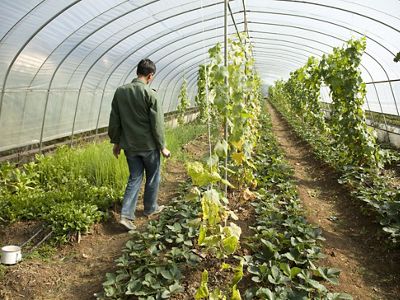The impacts of climate change can be felt everywhere in China. Because of the country's vast size and its drastically different geographies, the impacts are wildly diverse. In the north, increasing temperatures and drought contribute to grassland degradation, creating challenges for herders. Along the southeastern coasts, increases in typhoon intensity is causing catastrophic flooding and significant damage.
Natural climate solutions, also known as nature-based solutions, refer to the protection, restoration and sustainable management of critical ecosystems as an effective way to tackle climate change. Natural climate solutions can help China reach its climate goal of net zero carbon emissions by 2060. Natural climate solutions also have added benefits for people and nature. For example, reforestation in China’s highlands, while removing more carbon from the atmosphere, also improves habitat for threatened species like the giant panda and Yunnan golden monkey. National-level policy can help integrate natural climate solutions throughout China.

The Role of Policy in Developing Climate Solutions
China accounts for about a quarter of global carbon emissions. Though the increase of China’s emissions has slowed in recent years, its population and GDP growth have big implications for climate over the coming decades. The Chinese government is taking actions to reduce carbon emissions from industry, urban and rural construction, and transportation. Decarbonization is essential to achieving China’s and the planet’s shared climate goals. But on its own, it will not be enough.

TNC is collaborating closely with government and other partners to support the development of nature-based solutions through scientific and technological innovation, as well as improved carbon sequestration: the potential for natural ecosystems to pull carbon from the atmosphere and store it in soil and plant material.
For example, TNC and partners promoted less or no tillage sowing technology in the major agricultural hub of the Huang-Huai-Hai region. The strategy reduces greenhouse gas emissions from farming operations and enhances soil carbon storage. At the same time, straw and moisture management technologies help ensure a high crop yield and increased income for the farmers.
Policy Work in Action
Partnering to Promote Nature-based Carbon Storage
This past June, TNC and China’s National Climate Change Strategy Research and International Cooperation Center (NCSC) jointly launched the "Research on Improving China's Ecosystem Carbon Market Mechanism." The project aims to systematically study the development of China's forest, grasslands and marine ecosystem carbon storage projects through market mechanisms. Market mechanisms can include the clean development mechanism, voluntary emissions reduction, carbon neutrality incentives and local carbon markets.
The research will result in policy recommendations based on the observed impacts of market mechanisms on nature-based carbon storage projects to date, both in China and globally, and the potential to increase that impact. The goal is to identify practical policies that enable market mechanisms to incentivize nature-based carbon storage projects that meet a high standard of integrity.


To incorporate natural climate solutions into nationwide action, China is using nationwide policy. In 2021, the Special Climate Envoy, Mr. Xie Zhenhua, announced that China has incorporated natural climate solutions into its national policy framework for carbon neutrality.
To build on policy progress, TNC is championing two natural climate solutions often hiding in plain sight:
- protecting and revitalizing forests, grasslands, and wetlands, and
- sustainably managing grassland and cropland ecosystems.
All of these ecosystems store carbon and prevent its release into the atmosphere, while simultaneously protecting wild species and the livelihoods of local communities.
Helping China reach its ambitious carbon reduction goals—while providing benefits for nature and people—requires that TNC and our partners join forces. TNC is contributing our science, project results and expertise to help decision-makers determine the most effective policies and financial mechanisms that will reduce carbon emissions and protect nature. Together, we will reach our goals with science, with action and with policy.

